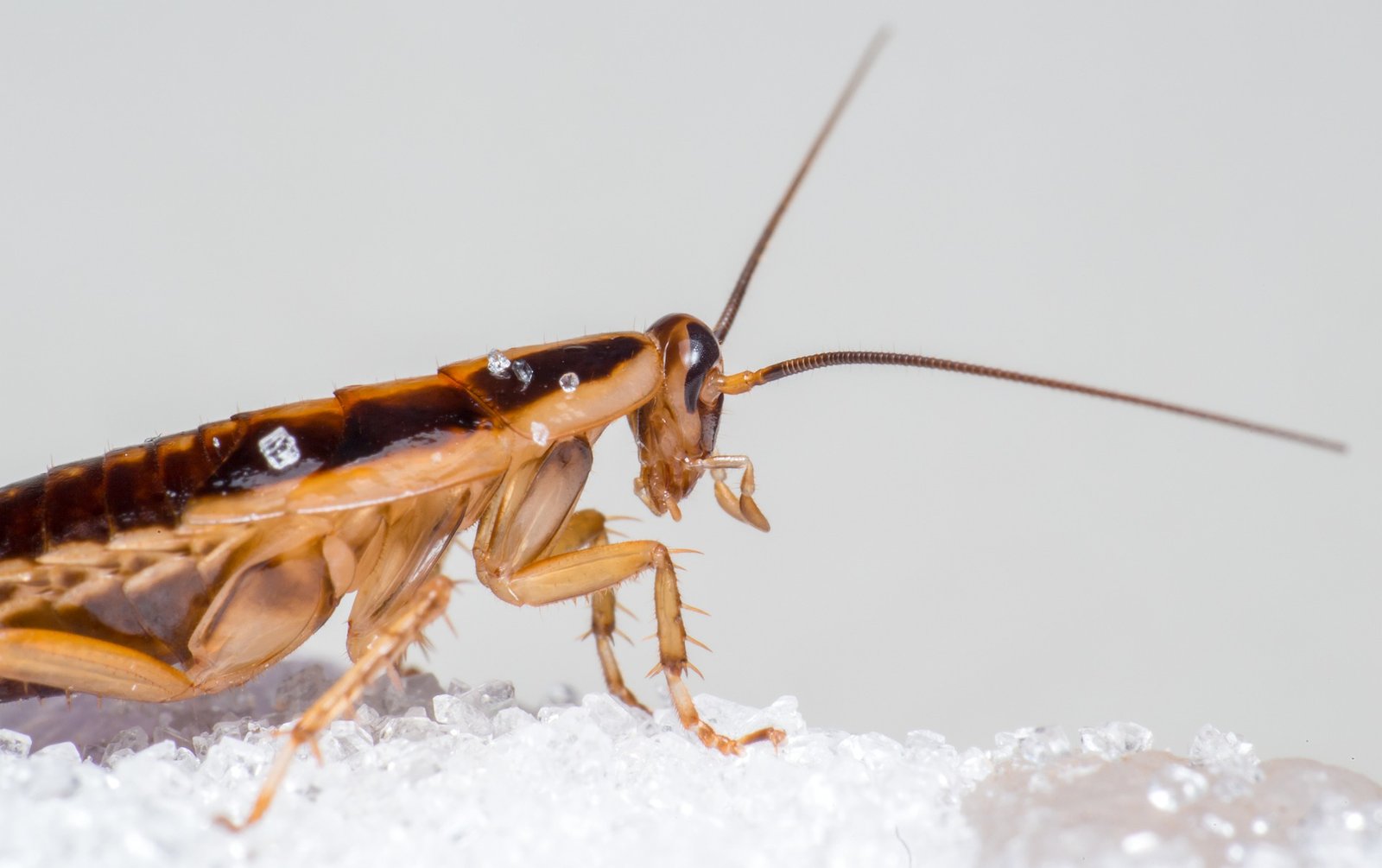Cockroach
The cockroach insects are a huge danger to public health, and pests. They can cause damage by chewing, contaminate food with droppings, and spread germs and diseases. Cockroaches prefer to live in damp, warm areas like crawl spaces, porches, basements, electrical appliances, furniture, cabinets, bathrooms, or sewers.
Species
There are 4 types of likely-cause-problems cockroaches:
Banded Cockroach

Nymphs: 2 pale bands across the back.
Adults: 2 pale bands across the base of the wings.
Found anywhere in the house such as around the ceiling, closets, and furniture as they prefer dry, warm places.
Size: 1.27 cm
Color: Light brown.
Oriental Cockroach

Nymphs: Dark, shiny black to reddish-brown color.
Adults: Black with wings shorter than the belly.
Found in sewers, basements, protected outdoor areas, shrubbery, trash piles, and water-meter curb boxes.
Size: 3.175 cm
Color: Brown or black
American Cockroach

Nymphs: Segment margins and darker sides.
Adults: Wings cover their bellies.
Found in sewers and water meters.
Size: 3.81 cm
Color: Reddish-brown
German Cockroach (most common)

Nymphs: 2 dark vertical stripes behind the head.
Adults: 2 dark stripes.
Found in bathrooms and kitchens.
Size: 1.9 cm
Color: Light brown
COCKROACH SIGNS
Seeing cockroaches is something usual, but you have also to look for many signs including:
- Dead cockroaches
- Musky, sour odors
- Check along cracks for brownish stains
- Coffee-grounds-like droppings along runways
- Small egg cases that look like leather
- When the nymphs grow, they shed old skins. So, look for these old skins.
Prevention
To infest a building, cockroaches need hiding places, access, water, and food. You need a team effort by a pest control operator, tenants, and management to eliminate the cockroaches.
PEST CONTROL OPERATOR:
Properly teat all affected units, inspecting neighboring units, and of course, the infested areas during follow-up inspections.
TENANT:
- Follow the pretreatment instructions of the pest control operator for your place.
- Update the building manager with any plumbing leaks.
- Don’t leave a pets’ food or water dish, and dirty dishes out or in the sink overnight.
- Keep food in completely sealed vessels.
- Clean up water spills quickly, and even eliminate water sources.
MANAGEMENT:
- Repair all water sources that leak in the kitchen and bathrooms.
- Seal the exterior doors very well by using door sweeps.
- Repair all cracks and holes in floors, ceilings, and walls to block hiding places and access.
Control
- Do not keep insecticides in the reach of pets and kids.
- Be sure to read the labels of the insecticides, that is considered as a temporary solution, before buying them to choose the right ones for your units.
Contact sprays may last for a few hours when they are sprayed on bath or kitchen surfaces. Some other sprays called residual, which come in several forms, may last for months! These sprays are applied along runways and in crevices and cracks. Another insecticide called dust is used between crevices or cracks and walls. You can only use dust in dry, void spaces under refrigerators, stereos, televisions, stoves, and cabinets.
Share this to let other people know about it!
